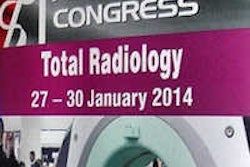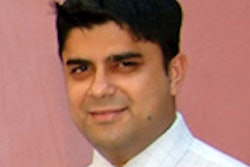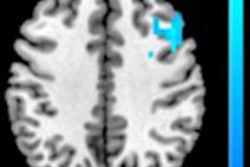Dear AuntMinnie Member,
Our coverage of Arab Health 2014 continues this week with articles on radiology resident education in the Middle East, the changing role of radiographers/radiologic technologists, and a new Arab School of Radiology being launched later this year.
Imagine trying to launch a new program for training radiology residents when you're not even sure what curriculum to base it on. That's the challenge faced by radiology faculty at a medical center in Abu Dhabi, United Arab Emirates (UAE), which had to find its own way in designing a program. Learn how they did it by clicking here.
Meanwhile, resident training should be improved by the launch of the Arab School of Radiology in the spring, which has the goal of improving the quality of educational opportunities in the Middle East. Read more by clicking here.
And last but not least, organizers of the Total Radiology sessions at Arab Health 2014 promised more presentations related to radiographers/radiologic technologists, and they did not disappoint, as witnessed by this article on how the role of technologists in the UAE has changed over the years.
Get these stories and more in our Middle East Digital Community by visiting me.auntminnie.com.
Screening mammo and health risks
Proponents of more restrictive guidelines for breast screening often cite the harms of mammography as a factor that should be considered when determining whether women -- particularly those ages 40 to 49 -- should be screened. But a new study raises the question of harms that could occur if these younger women are not screened.
Researchers from Ohio looked at women in the younger age cohort who had been diagnosed with breast cancer, and separated them into those who had been screened and those who hadn't; the latter group's cancer was discovered after the women experienced symptoms.
They found that more high-risk lesions were detected in the screened women, and these women also had less need for chemotherapy. Learn more about the findings by clicking here, or visit our Women's Imaging Digital Community at women.auntminnie.com.
Benefits of image exchange
Finally, a new article in our Healthcare IT Digital Community underscores the benefits of healthcare information exchange, particularly of medical images.
Researchers examined repeat imaging rates at unaffiliated healthcare providers that had set up regional health information exchanges. They found that these sites had half the rates of repeat imaging compared to facilities that didn't participate in the exchanges.
Learn more by clicking here, or visit our Healthcare IT Digital Community at healthcareit.auntminnie.com.



















